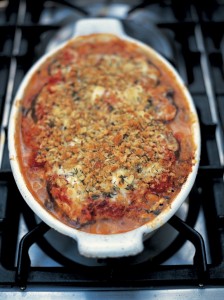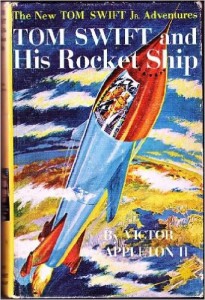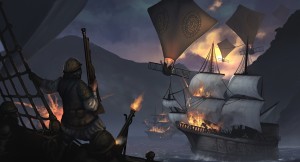On December 7th my thoughts always turn to my father and the pivotal events in Hawaii in 1941. He was a young man in the Army based at Hickam Field as an airplane mechanic. With the attack on Hawaii, he quickly trained to become a bombardier and soon found himself in the jungles of Guadalcanal. When I turned fifty, I made the trek to Hawaii and Hickam Field to see first hand where the war began for my Dad. Below are my reflections from the trip.
My Father’s War
On a beautiful Friday afternoon in Hawaii, under clear blue skies and soft breezes, I stand before a cream-colored concrete building; what to my father was a barracks and what today is a bullet-riddled memorial to the young men who died here, so many years ago. On this day, probably not unlike that morning of December 7, 1941, I find myself at Hickam Field standing where my father stood, over sixty years ago as a nineteen year old soldier, taking black-and-white photos that he wanted to send to his mother stateside.
I imagine that my dad, Bill Hacker, who died in 1993, had joined the U.S. Army partly to escape Alexandria, Virginia, partly to live the adventure, and partly to put his mechanical skills to good use in aviation. The young man who had stood with other graduates of the Aviation Mechanic School in front of a B-18 could not have imagined that, in a very few months, he would hear the steady drone of Japanese Zeros and dive-bombers coming across the gap directly over Hickam Airfield. Before the attack, he had photographed the barracks, the hangars, Diamondhead, the beaches, and the young teenaged enlistees who I’m sure were his friends. After the attack, his photos turned into a record of young men, with side arms and helmets, unshaven and in the jungle.
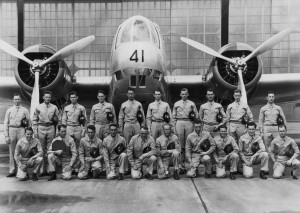
July 8, 1941 Graduation Class, Aircraft Mechanics School, Hickam Field, Oahu, Hawaii. Bill Hacker is front row, 1st on the left.
After December 7, my Dad was quick to volunteer for training as a bombardier on a B-17 Flying Fortress, going to Guadalcanal to join the desperate struggle against the Japanese Imperial forces in the early days of World War II in the Pacific. I often asked him about his service – as many veterans’ children have done through the years – hoping to learn some of the stories behind those fading pictures and, I suppose, understand an experience that could only have been formative in my father’s life. However, somewhere on his personal, inner path through life before I came along, he had decided to leave the war behind, and let his life move forward.
Even though my Dad had moved forward, I found myself drawn to that mysterious past. As a boy, I tried to imagine my Dad’s warrior times, combining the images of his wartime photos with plot lines from television’s Combat! and Twelve O’Clock High, playing out a life-and-death struggle I couldn’t comprehend, as I engaged in a pale imitation of his quest in the comfort of the back lawn with my best friend Michael. Unlike real battle, Michael and I, whether or not we had “survived” the travails of our combat, always made it home for our Mom’s dinner at the table. In an unconscious attempt to connect with my Dad and his wartime experience, I built several models of B17’s. Those efforts rewarded me with a service manual for a Boeing B17 pulled from a box in the attic, and some reminiscing about endlessly long chow lines and sadistic drill sergeants.
One day I made a journey into my parent’s bedroom, coming upon my Dad’s service Colt .45 automatic, quietly hibernating in his dresser’s top drawer. I am sure he felt that the gun, placed so high in a tall-boy dresser, would be well out of reach of an eight year old. But he hadn’t taken into account how much a very determined eight year old can do. The gun felt incredibly heavy, and the odor of gun oil and leather filled my nostrils, an indelible memory that has lasted through the years. A leather shoulder holster had let my Dad carry the weapon while in the bomber’s nose. Copper-dipped cartridges filled with tracer bullets fit neatly into two pockets on the side of the holster.
Even at the age of eight I knew that this was a gun that had been where war had been. Not just any war, but my Dad’s war. These were the bullets my Dad would have fired out of necessity, so many years ago. Like some mystical object, the .45 exuded adventure, and danger, and terror. In that moment I felt some connection to the mystery he kept from me, either for my sake or maybe his own. But holding that gun I had, for a moment, connected with something important, something sacred, something intimately personal.
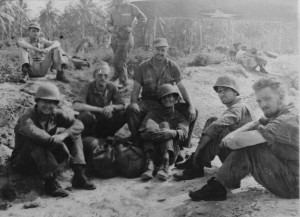
The crew under the wing of his B-17 at an airfield on Guadalcanal. He’s front left.
My Dad died in 1993. I have come to Honolulu, and now Hickam Field, to find a part of my Dad, connect to what must have been some of the most significant experiences of his life, connect to that nineteen year old boy whose life, along with the lives of millions of others, suddenly took a dark and terrifying turn. I do have a few snippets, a handful of memories that slipped through that wall he had built around his wartime experience. Only one hints at the violence, and danger, and chaos, and death he witnessed, and none speak of the aircrew mates who died.
- Pulling KP duty and being rewarded for his early morning labors with a hot loaf of bread and a stick of butter. I can still see him smiling and telling me, “You haven’t had bread until you’ve opened up a fresh, hot loaf and dropped a stick of butter inside.”
- A Texan who bunked near him and sang of the Yellow Rose of Texas over, and over, and over.
Low-level bombing sorties over Japanese ships. When talking to my Dad about my wife’s having had a few days in which a viral infection had affected her balance, he briefly recollected how the concussions of low level bombing sorties had eventually damaged his middle ear, an injury that resulted in his being sent home.
- Young men who had gathered in the jungle to watch a movie and escape, if only for a few minutes, the thought of suddenly having to run for cover in the dark, slamming into palm trees and tripping over the jungle growth, to evade the anticipated strafing of a Japanese Zero.
Those are the images, the details lost, that slipped into a casual comment, but never described in more detail than those brief lines. He never spoke about the combat missions, only the concussive force of their low level bombing runs.
On a bright tropical day on Oahu I stood beside the commander of the local Civil Air Patrol squadron based at Hickam Field. I had been flying as a mission pilot for the Civil Air Patrol doing fire watch and photo missions after hurricanes for several years. One of the benefits of membership in the Civil Air Patrol, a volunteer civilian auxiliary of the United States Air Force, that had not occurred to me at the time I joined was the network of CAP members and the common ground we share. Several months before my long-awaited trip to Hawaii, I had made contact with the squadron commander hoping to gain access to the Air Force Base long enough to at least see some of the sights in my father’s photographs. To my good fortune, I connected with the commander of the 66th Composite Squadron, a CAP unit based at Hickam Air Force Base. Lt Col Carswell J. Ross Jr. – or Caz as he likes to be called – met my wife and me at the gate of Hickam AFB, helped us through security, and then generously shared his time on a Friday afternoon to lead us on a tour of the base.
Lt Col Ross, an upbeat retired National Guard veteran, took us to the very barracks my Dad had lived in – and photographed. I had always assumed that the barracks, the tower and the hangars had been spread across a great expanse. Instead, I discovered that my Dad had essentially stood in one spot, taking pictures of all of these structures as he happened to see them. The barracks now have great chunks of concrete that have been chiseled out by large-caliber projectiles and shrapnel. Internal steel staircases still bear the scars and holes caused by repeated strafing runs on the building. Inside, an open courtyard holds a monument to the men and women who have served in the three great conflicts of the 20th Century in the Pacific Theater: World War II, Korea and Vietnam. On the wall, plaques honoring all the Army Air Corps and United States Air Force recipients of the Congressional Medal of Honor.
My wife, Sidney, called her father to share our moment with him. In an unusual coincidence, she found out that just days before our visit to Hickam he had enjoyed dinner with one of those Medal of Honor recipients and a comrade of his, Col. George “Bud” Day. A retired USAF fighter pilot and recipient of the Distinguished Flying Cross, who served in Asia and Europe, Maj. William Bailey has seen more than his share of combat, especially in Vietnam. Standing in this historic place, my father gone but remembered, my father-in-law a courageous warrior of conflicts that came after WWII, and the resting place of over one thousand sailors in the sunken hull of the USS Arizona not far away, I could not help but be reminded that, often, freedom must be won with great sacrifice, a sacrifice that falls upon the shoulders of those we love, and of those who love America.
On the following day, I met Caz once again, but this time at the hangar where the 66th Squadron kept the two aircraft in their care. That morning I flew with Maj. Chris Sullivan in N9988, a Cessna 172P. Maj. Sullivan, stationed at Hickam AFB, volunteered his time, as well as his knowledge and love of flying, to the young cadets and adult members of the CAP squadron. After a pre-flight briefing, we donned our life preservers (ditching is always a potential emergency procedure when you fly over islands) and took off from runway 4 Left, on a course east over Honolulu and Diamondhead.
The plan was to fly east along the coast and then turn north just past Diamondhead, flying with Oahu on our left and the vast, deep, blue Pacific Ocean extending out to the horizon on our right until we reach the island’s northernmost edge, then turning west and finally south across the center of the island to once again land at Honolulu International. Honolulu’s Charlie airspace (a designation for the size of, and air traffic control services available within, the airspace around the airport) was busy but manageable. Departing Runway 4 Left we quickly turned due east over the city of Honolulu. The iconic Diamondhead beckoned us and we flew past the long extinct volcanic mount turning north and listening to the local traffic on the radio. And the local traffic was wide, varied, and frequent! Within a few minutes, I saw F16’s, hang gliders, helicopters, military transport, airliners, and single-engine aircraft. Unlike the mainland, where we fly odd altitudes with easterly headings and even altitudes on westerly headings, in the Hawaiian Islands the local traffic flies North/South in even 1000’s and East/West at each 500 level (1500, 2500, 3500). Unlike my current home, Seattle, I was used to vast distances of Central Texas with plenty of open airspace (once leaving controlled airspace I might not see another aircraft) and water in very limited quantities — not endless ocean extending to the horizon, I had to adapt in a hurry to lots of sight-seeing traffic flying above and below, very little land mass, and an unforgiving ocean at my shoulder.
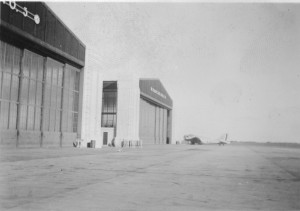
“View of the hangars.” (Note B-18 in background)
Flying north, as we went past the coastal town of Kailua and the nearby Marine Corps Base Hawaii (MCBH), Maj. Sullivan and I talked about the Civil Air Patrol mission on the Islands. I had noticed a set of loudspeakers mounted on the belly of the C172 during our pre-flight. Tsunami alerts comprise one of CAPs primary missions in Hawaii. Tsunamis, giant and potentially destructive waves created by seismic activity, come from two primary sources. Some tsunamis generate from the collision of tectonic plates as far away as Alaska’s Aleutian Islands and the coast of Chile in South America. These distant tsunamis, while dangerous, do at least provide time (four to ten hours depending on the seismic activity’s epicenter) for residents to move to safety. However, locally generated tsunamis from volcanic and seismic activity in the vicinity of the Islands normally fall upon the island with astonishing speed. The Pacific Tsunami Warning Center notes, for example, that a tsunami generated near the southeast coast of the Big Island will take only 5-10 minutes to reach the northwest town of Kona. While Civil Air Patrol squadrons may not have time to act with local tsunamis, in many cases with the more distant tsunamis, CAP aircraft flying the coastline warning beachgoers and residents to higher ground definitely save lives.

Flying toward Hickam Field and Pearl Harbor
We turned west flying along Oahu’s North Shore, famous for some of the most challenging surfing in the world, and then south over the town of Haleiwa. Even though we were flying down a wide valley, the ground rose beneath us. I could see Wheeler Air Force Base below as we flew the route Japanese fighters traversed so many years ago. In the distance, Pearl Harbor and Hickam Field came into view. For a moment I imagined an Imperial Japanese pilot flying across this peaceful valley, intent on war, while care-free islanders hardly notice the seemingly innocent drone of his aircraft overhead.
Within a few minutes we approached Pearl Harbor and asked Honolulu Air Traffic Control to allow a couple of slow 360 degree turns around the USS Missouri, where Imperial Japan formally surrendered. Poignantly, just a few hundred feet away lay the sunken hull – and now Memorial – of the battleship Arizona. The huge ship dramatically exploded during the attack and sunk to the bottom of the harbor. Circling one thousand feet above, I could still see the Arizona seeping oil from her battered hull, now a water-bound tomb for more than one thousand young sailors. Finally, we turned for Honolulu International, flying past Hickam Field, the barracks, the tower and the large hangars – a scene my Dad must have witnessed many times from the nose of a B-17. After landing on 4 Left, I took the time taxiing back to the CAP hangar to reflect on this journey into my father’s past.

USS Missouri and the the USS Arizona Memorial
Many things had changed since my father’s time on this island. The rumble of big radial engines had been replaced with the high pitched whine and roar of jets, and the city of Honolulu had certainly grown outwards and upwards. However, much remained the same. I stood where he had stood, before the same buildings his nineteen year old eyes had seen almost seventy years ago. I looked at the wonderful multi-paned glass hangar doors that he had captured in his pictures. And I stood on the same sands he must have sunk his toes into, watching a big rust-colored sun drop below the blue Pacific’s horizon. While my time at Hickam and the island of Oahu couldn’t bring back to life my father’s detailed memories of paradise and war, I did walk with the young man who was to become my Dad. For a fleeting moment, he and I stood shoulder to shoulder; a nineteen year old full of hopes and dreams, thrust into a world of conflict and death, and his son, who has enjoyed the freedoms his father’s service and so many others’ sacrifices have secured.
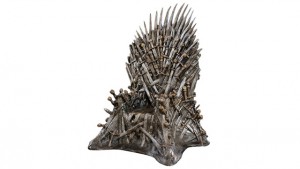 Chris Lough, in a recent Tor.com column, reflected on George R. R. Martin’s struggle to complete The Winds of Winter, the sixth installment of Game of Thrones. For Martin, the increasing pressure to complete a manuscript reduces his creative output. His cure is to find other outlets to let off some steam and shift his focus. Most of us don’t have HBO, a contract, and possibly some lawyers reminding us to meet our deadlines. And since many writers these days self-publish, the deadlines tend to be mostly self-inflicted.
Chris Lough, in a recent Tor.com column, reflected on George R. R. Martin’s struggle to complete The Winds of Winter, the sixth installment of Game of Thrones. For Martin, the increasing pressure to complete a manuscript reduces his creative output. His cure is to find other outlets to let off some steam and shift his focus. Most of us don’t have HBO, a contract, and possibly some lawyers reminding us to meet our deadlines. And since many writers these days self-publish, the deadlines tend to be mostly self-inflicted.